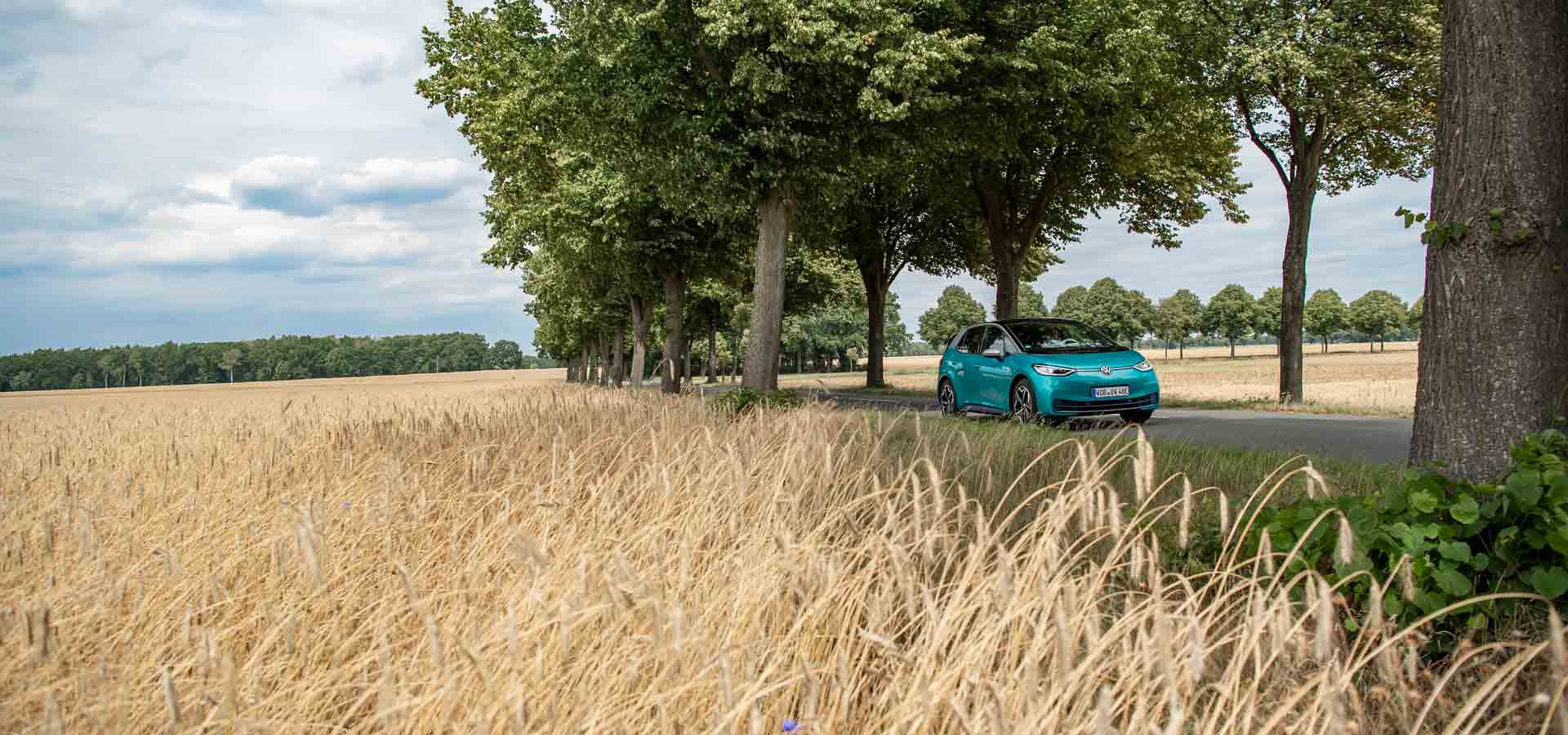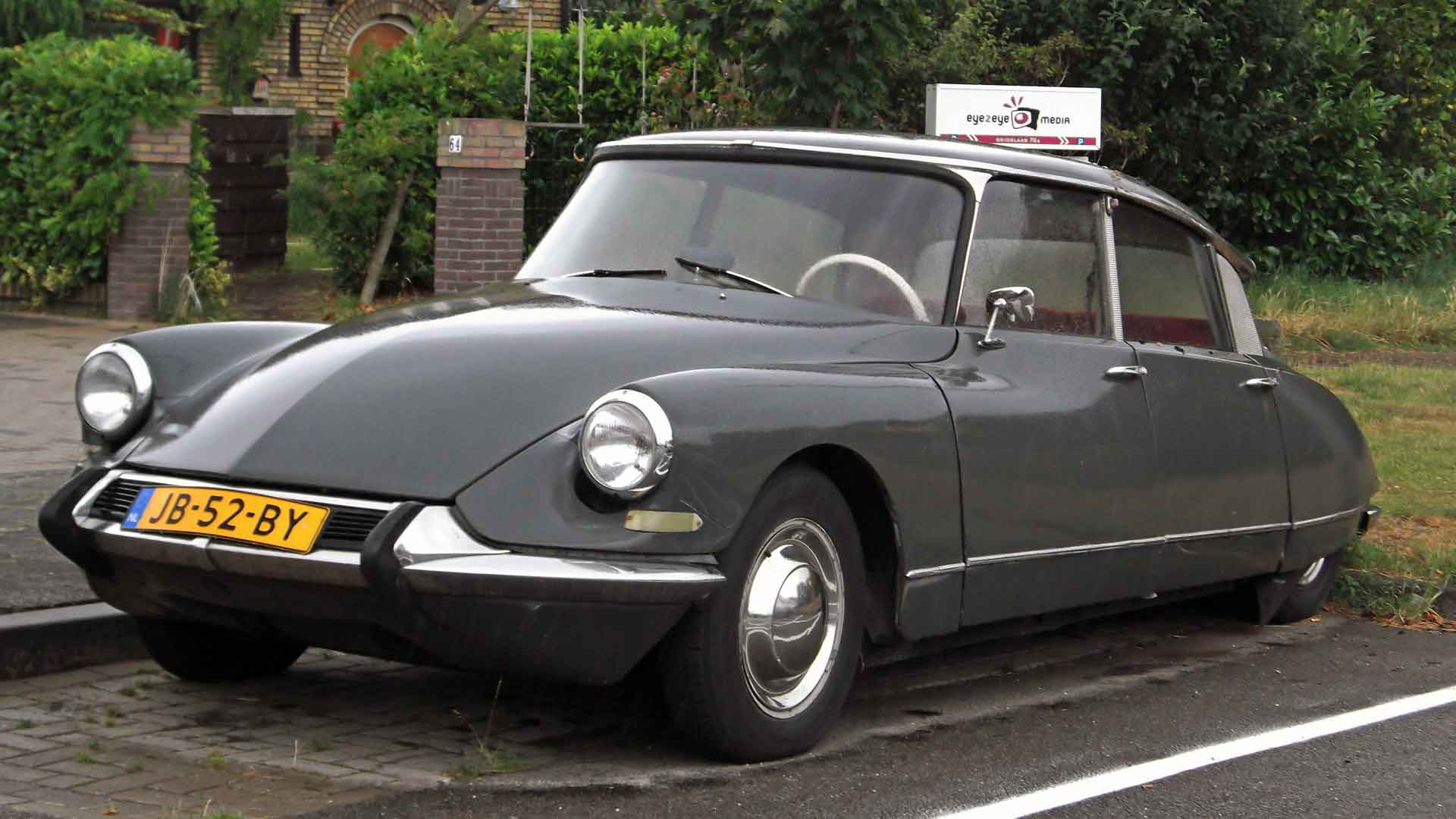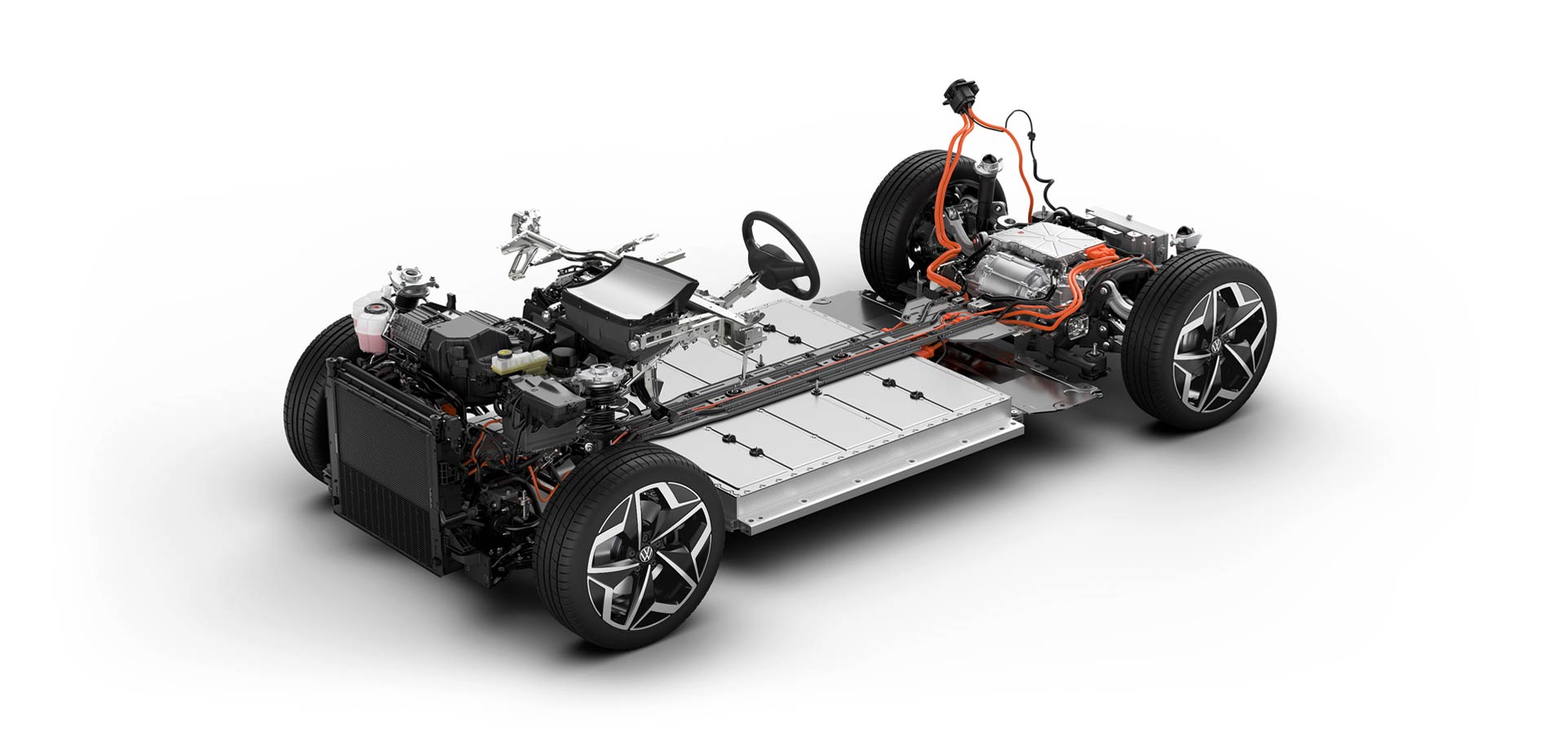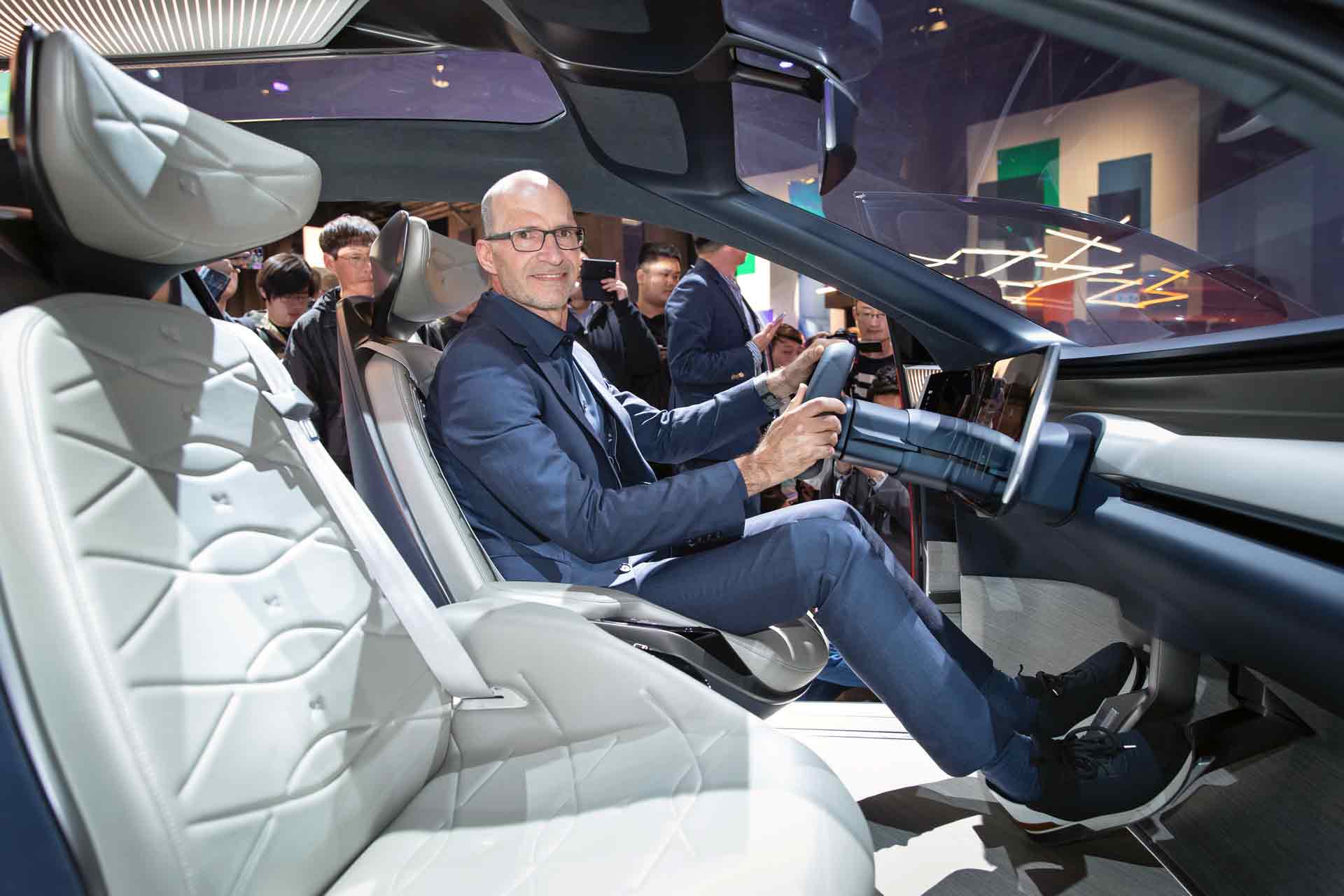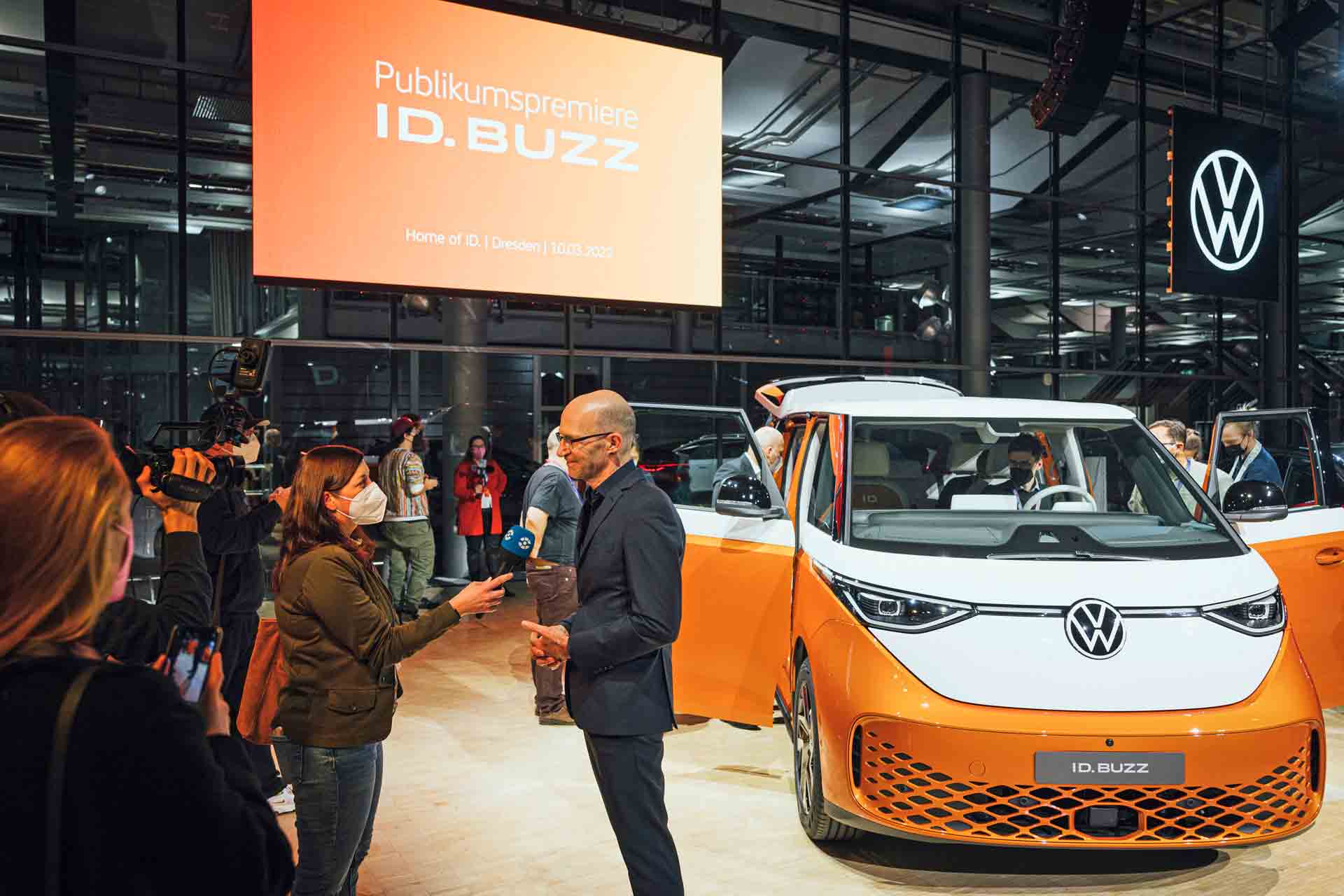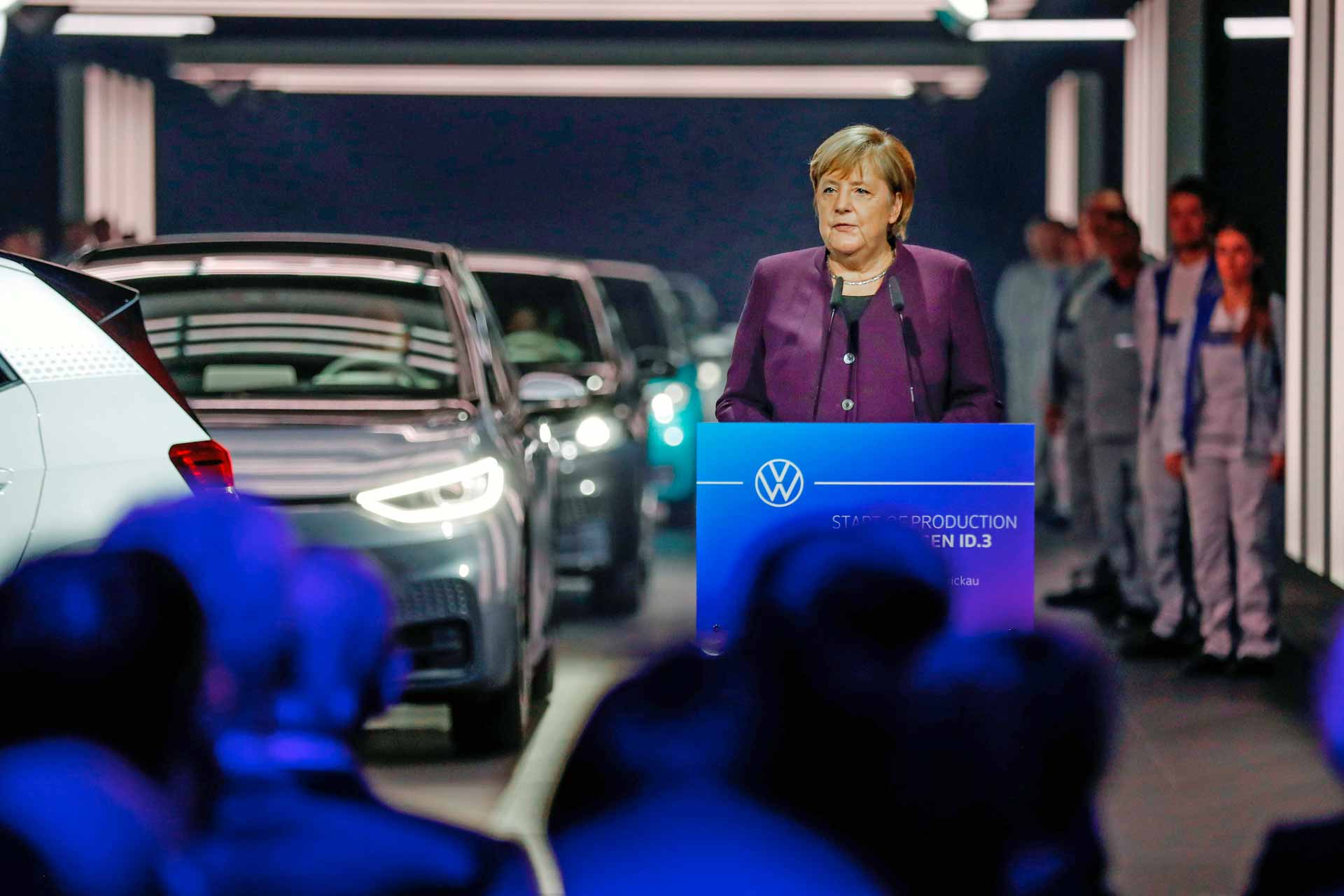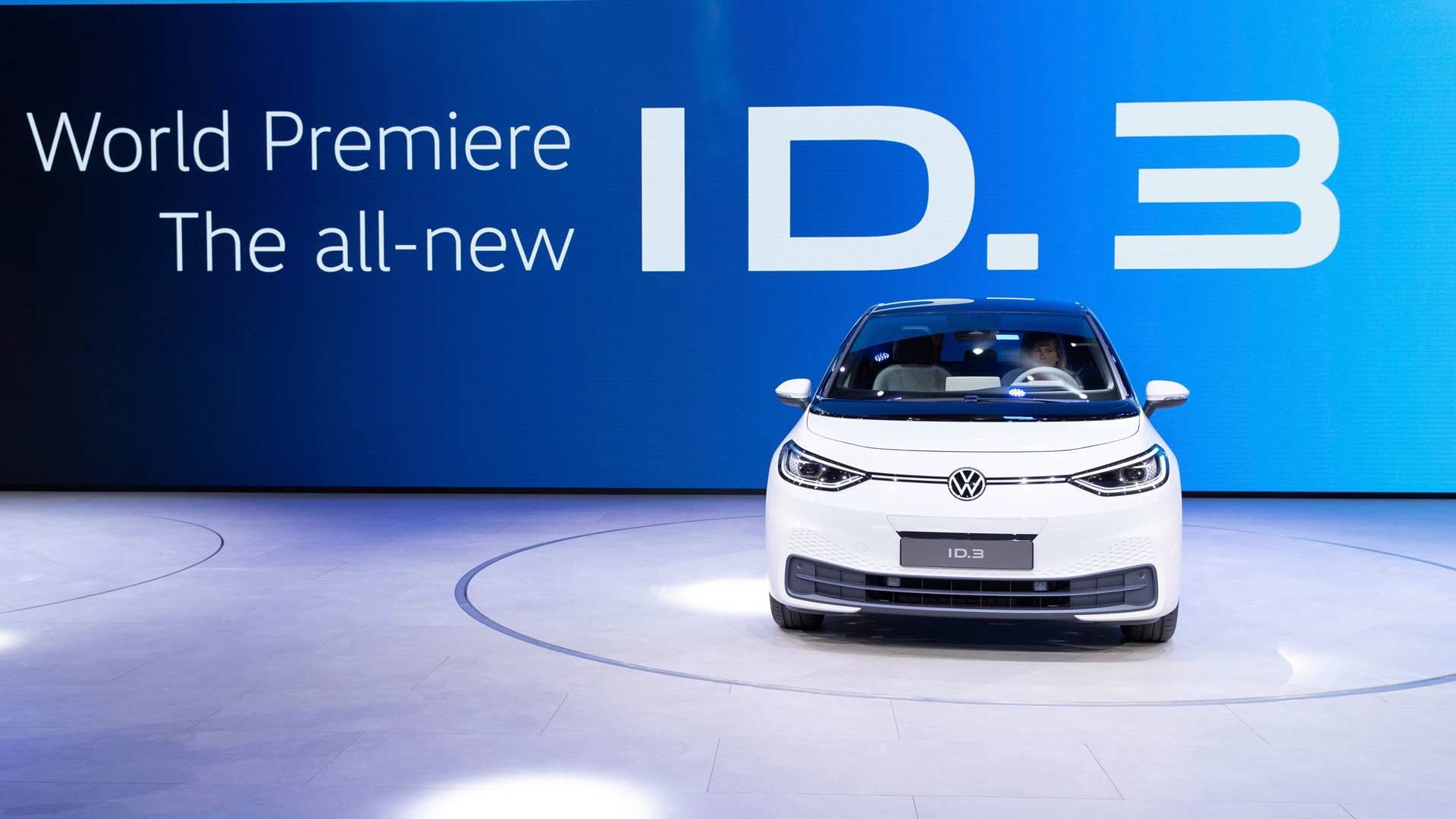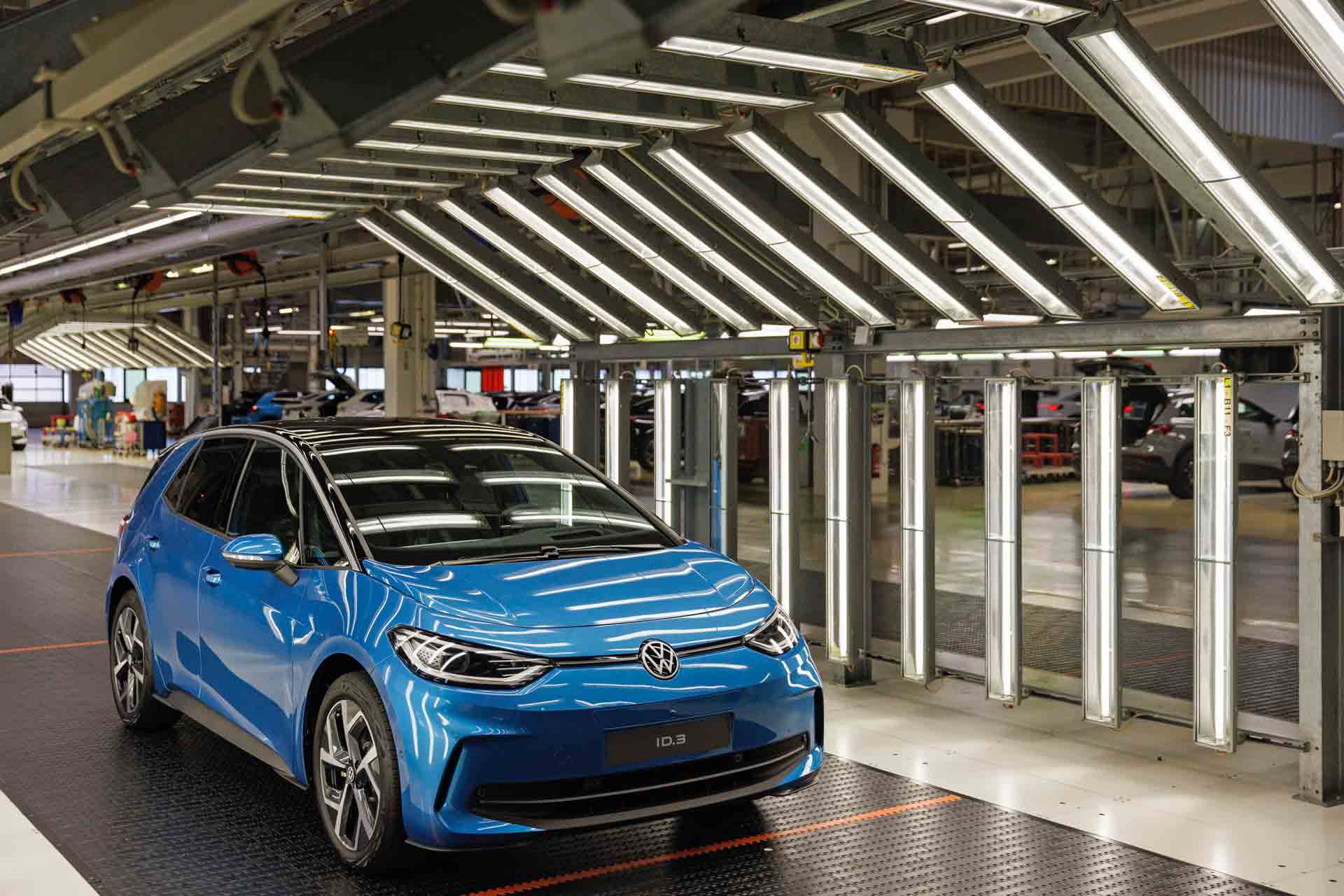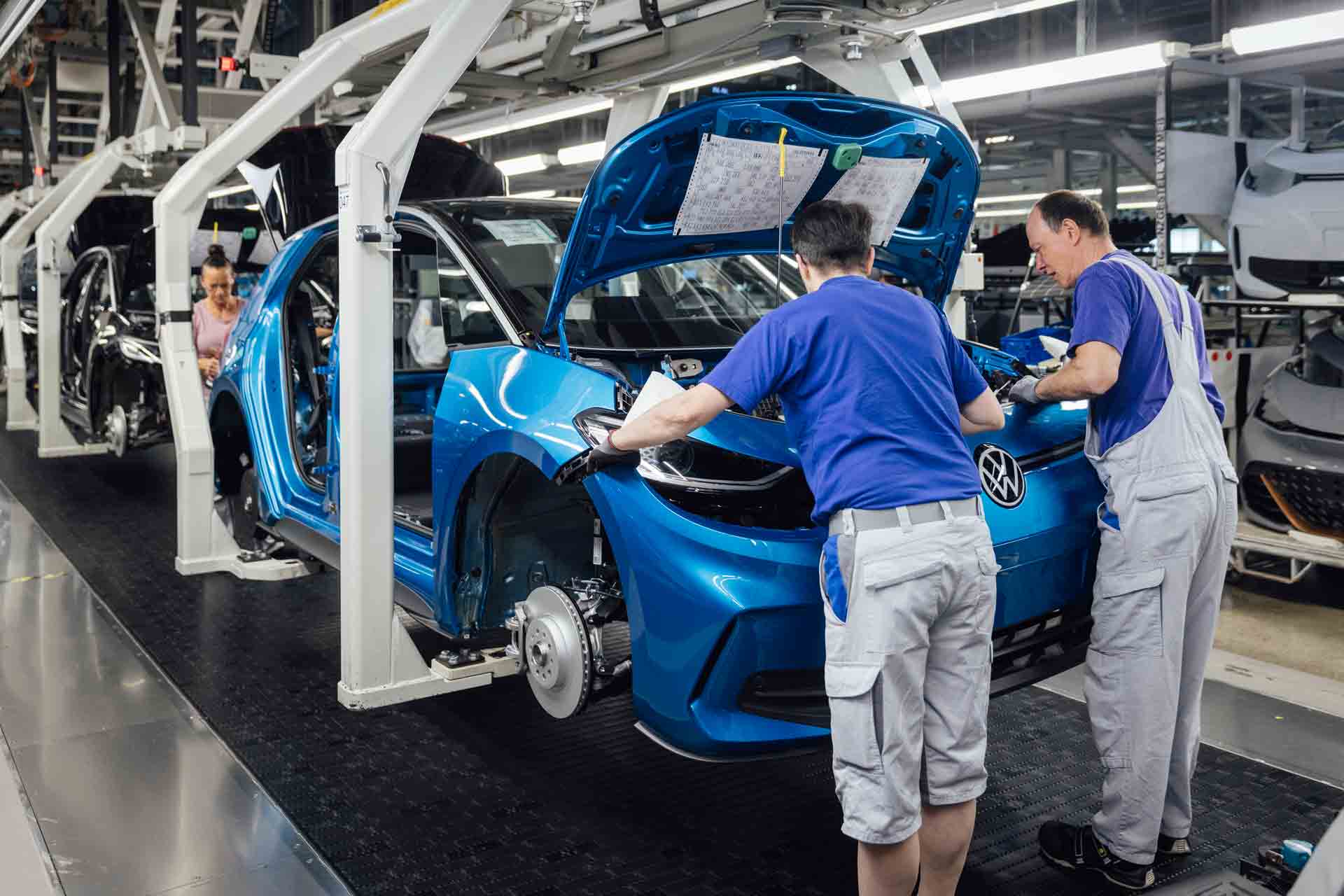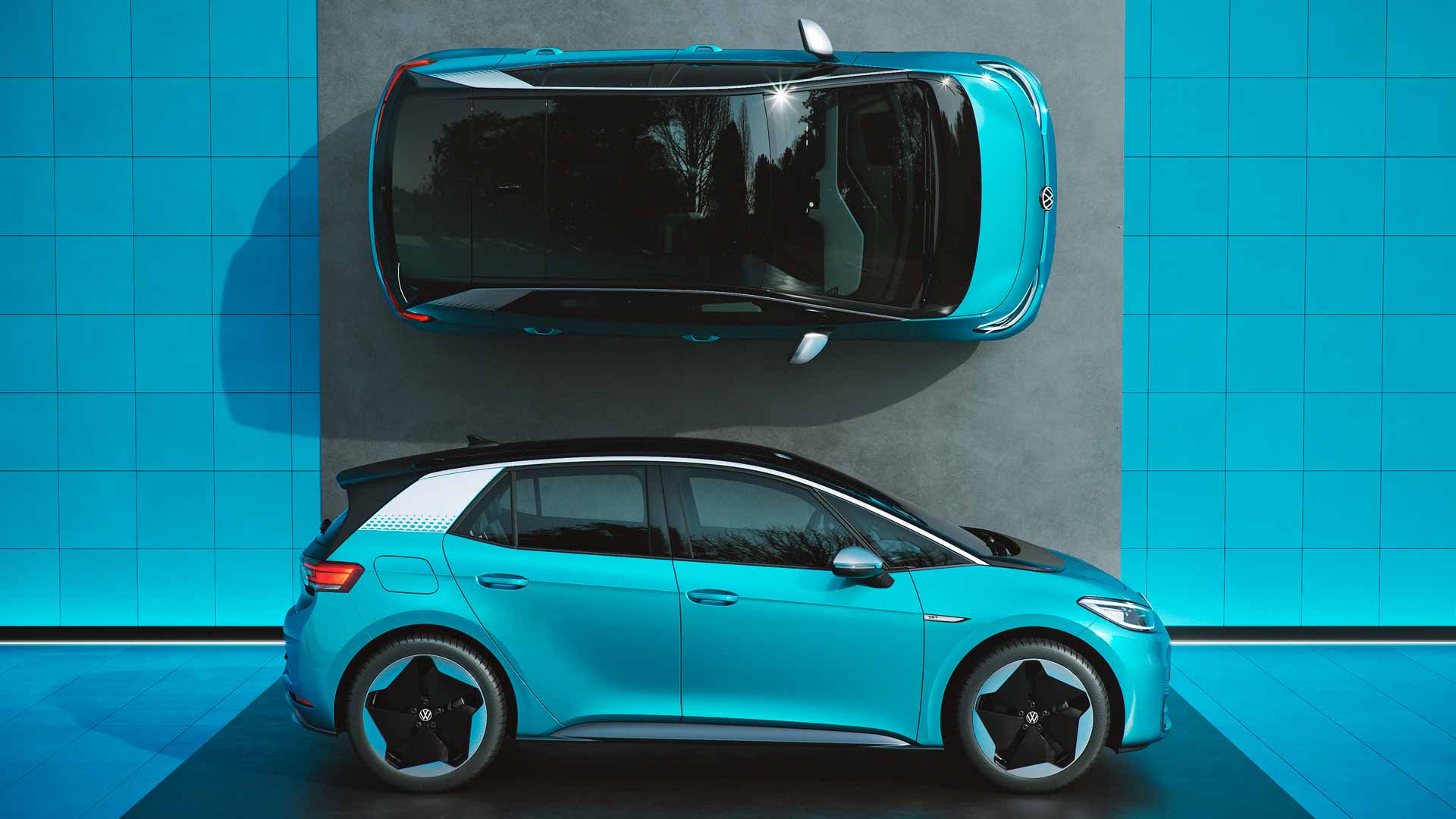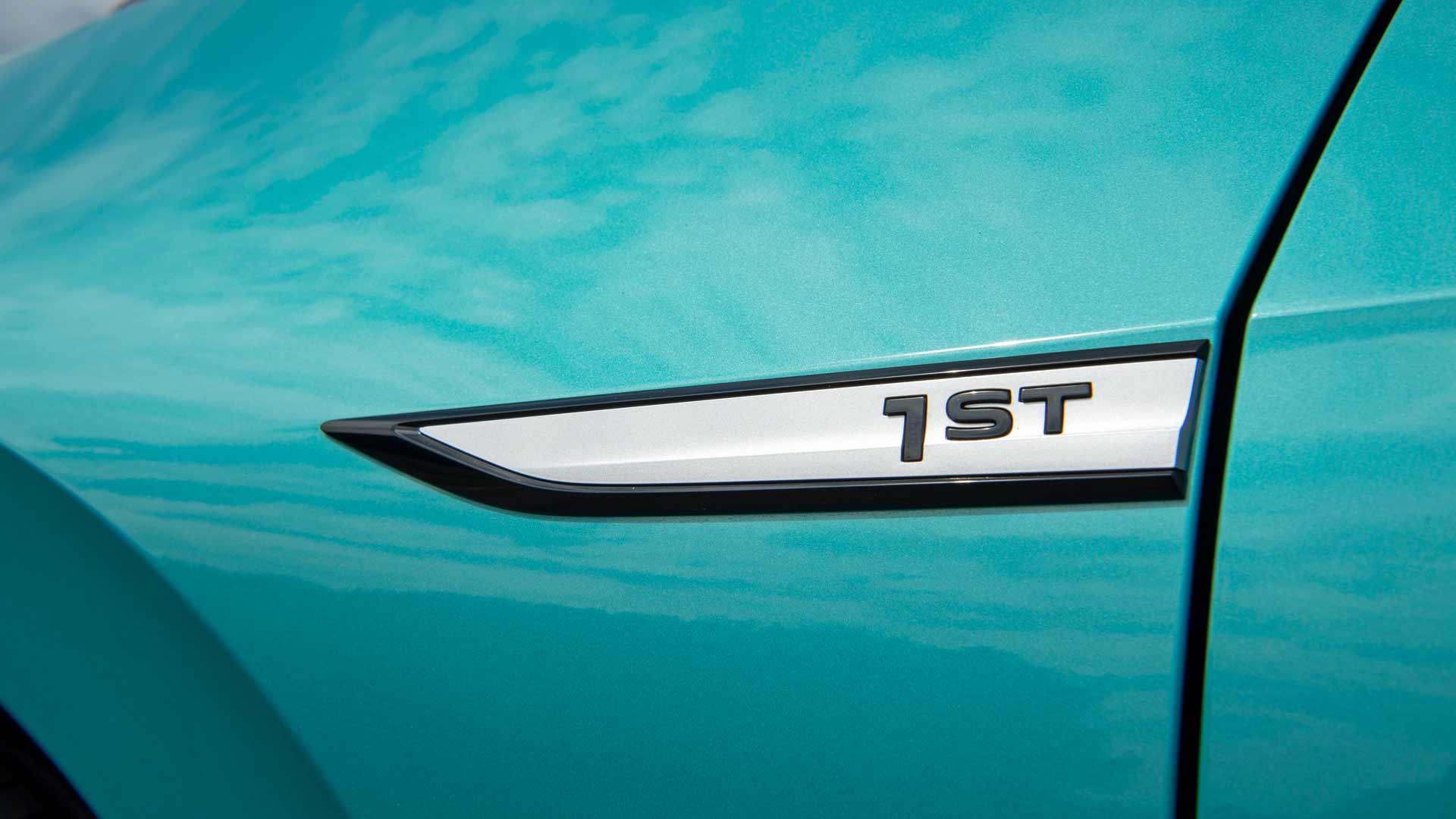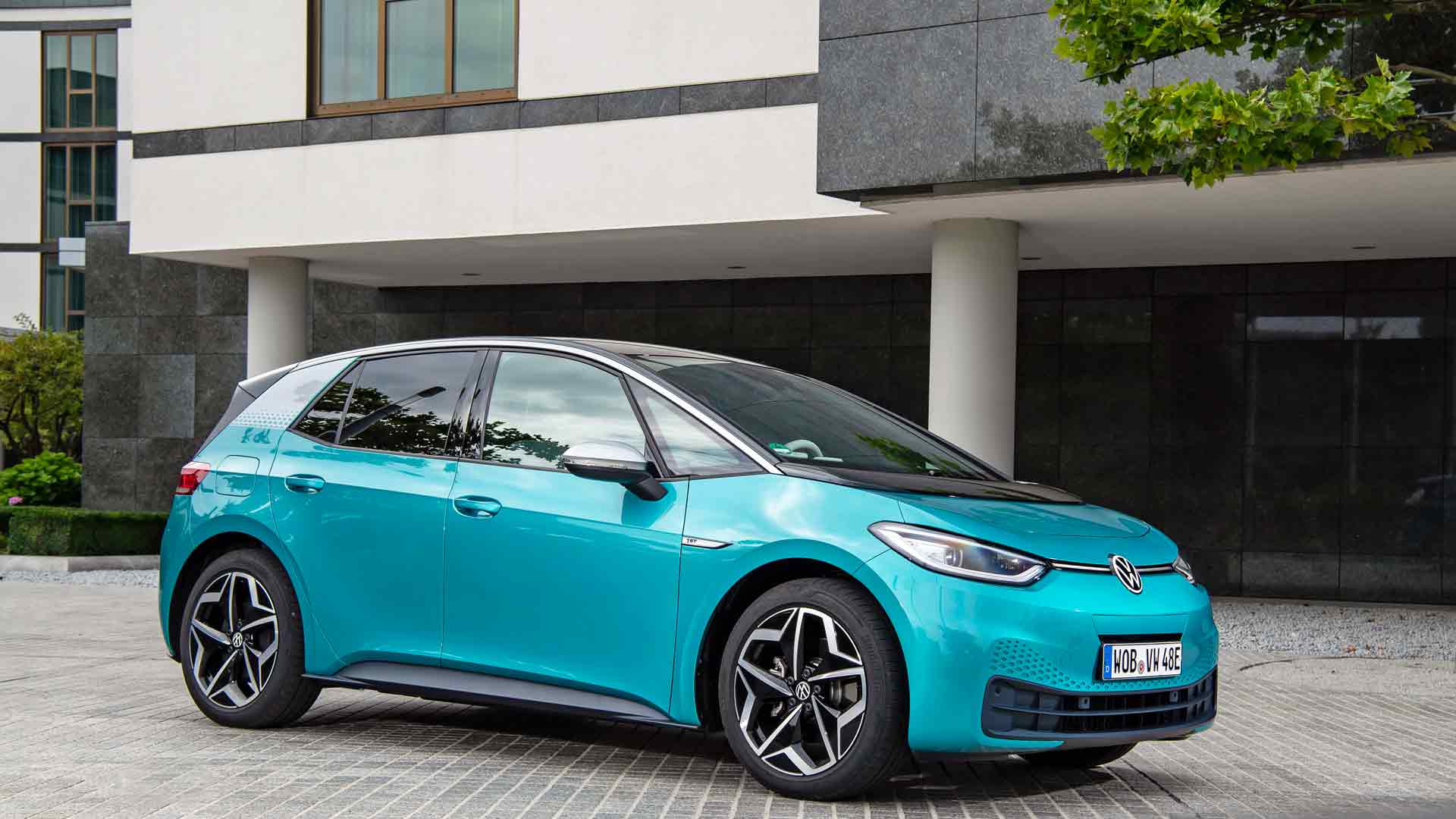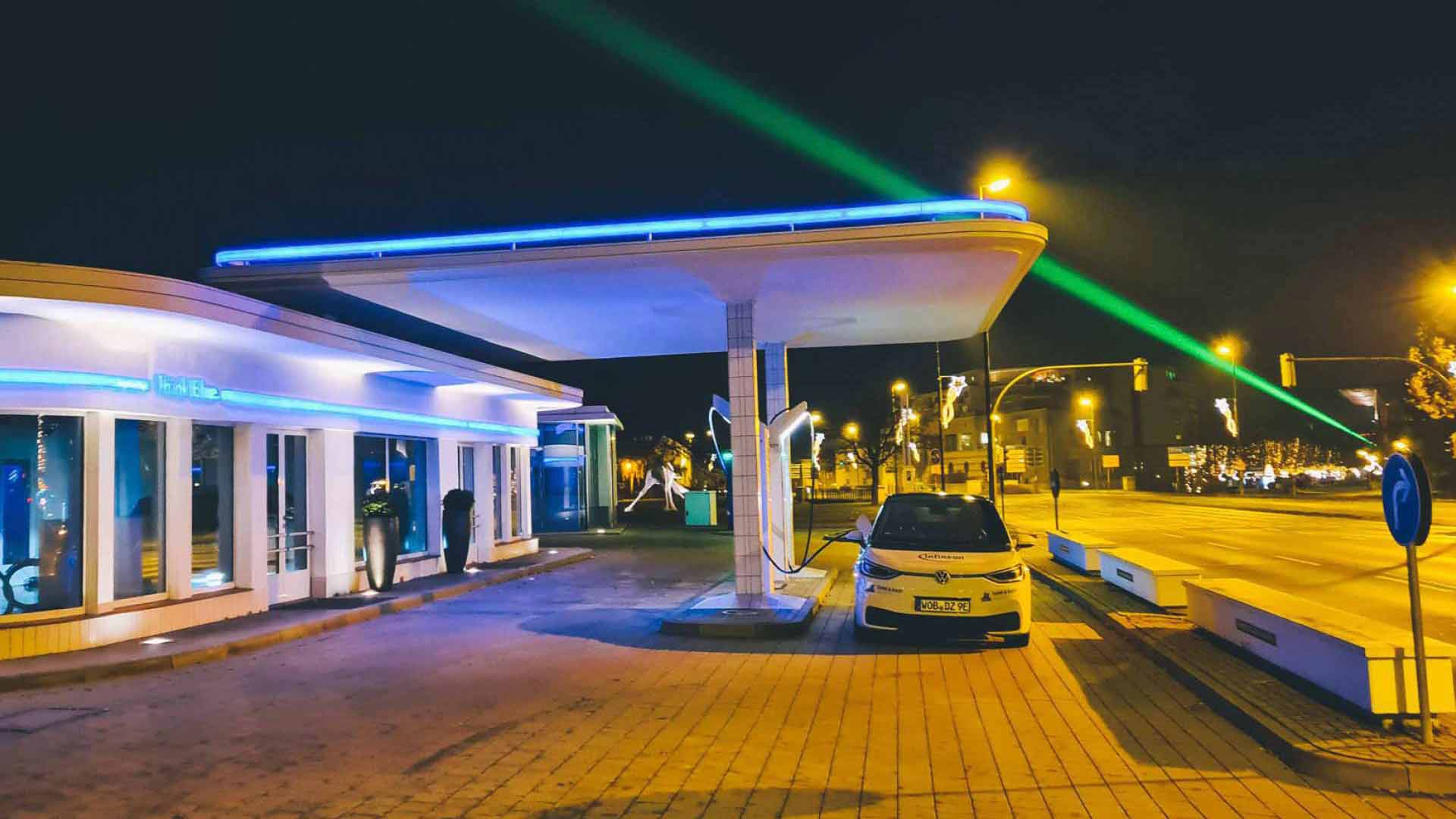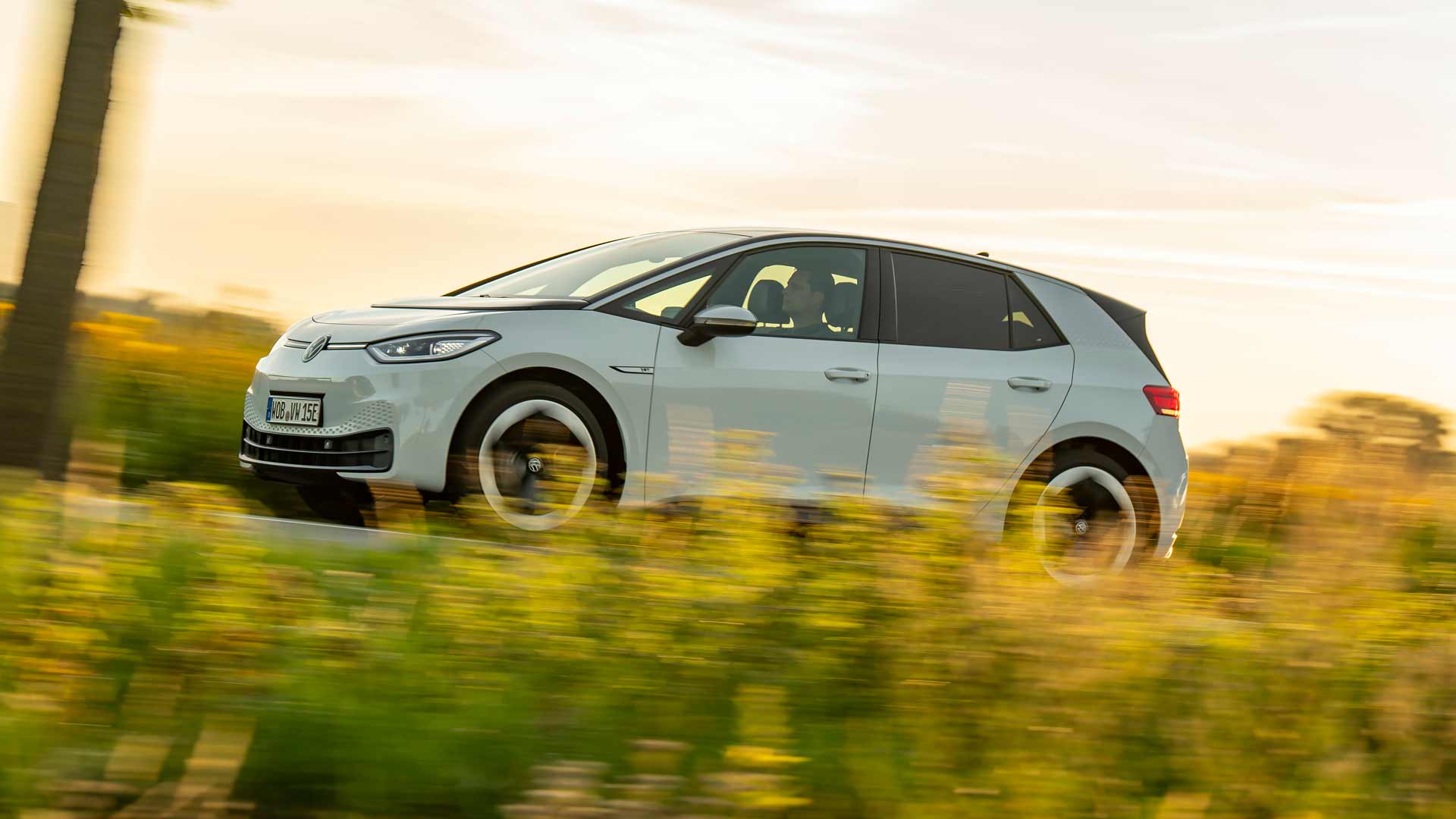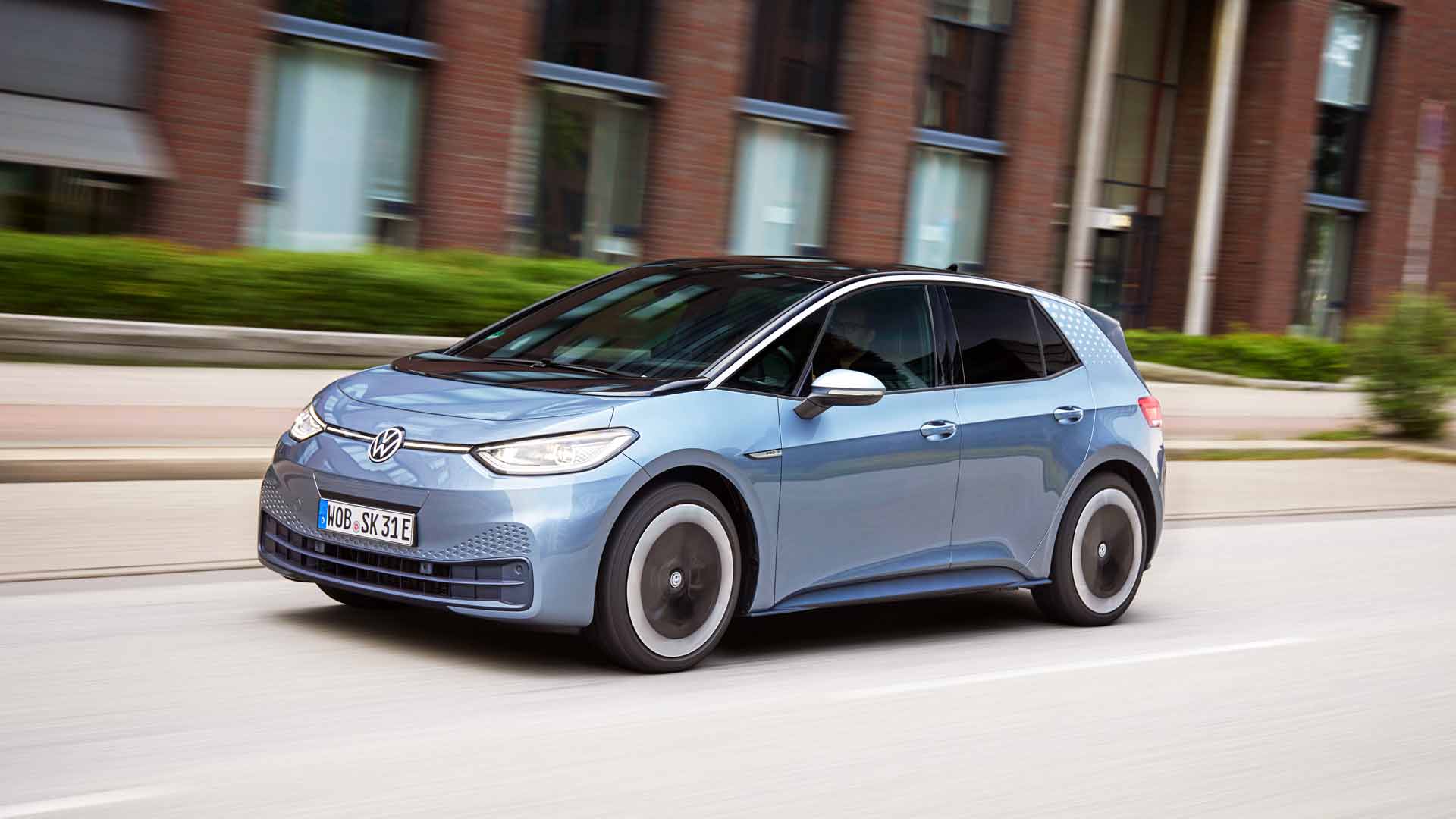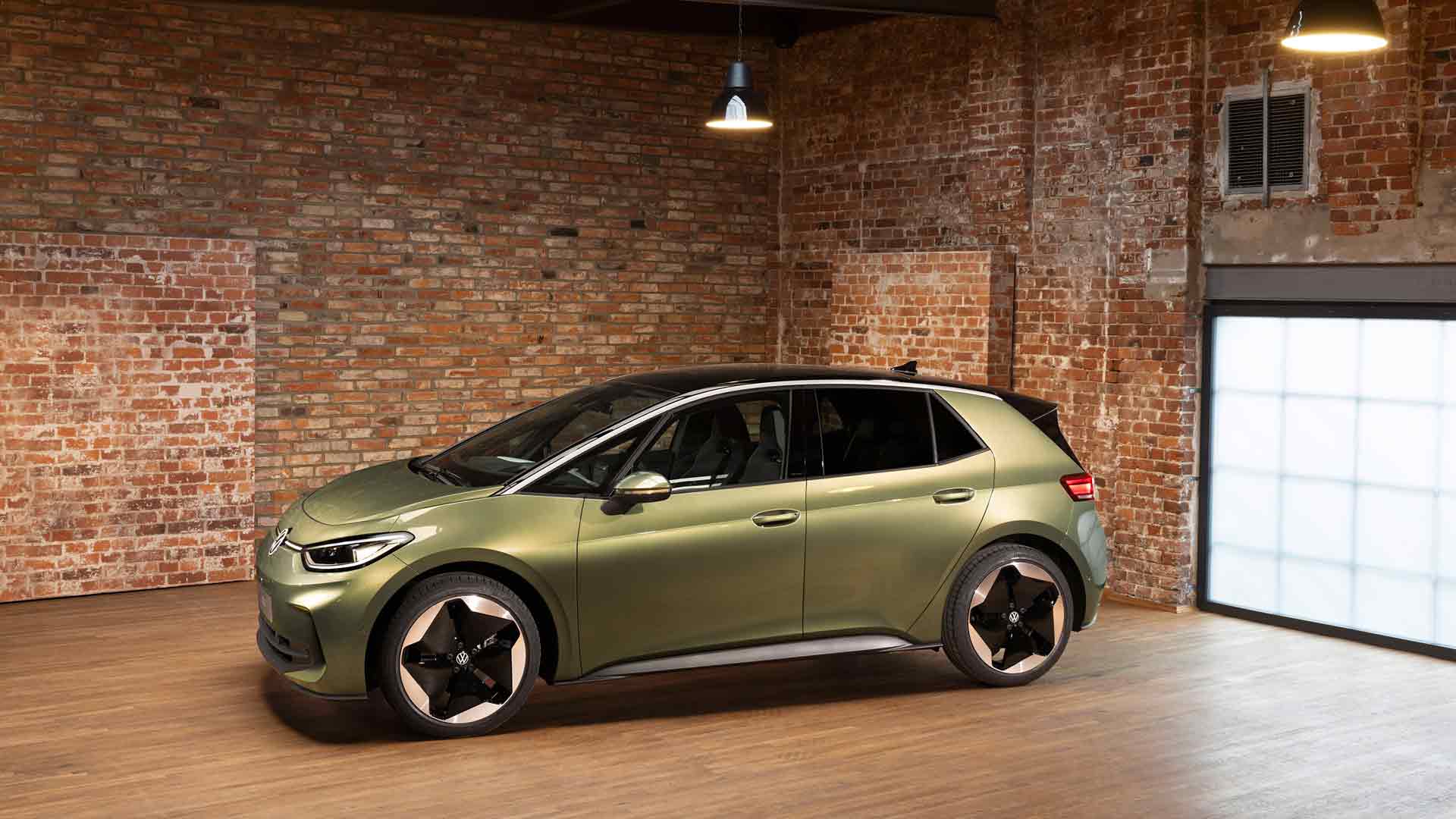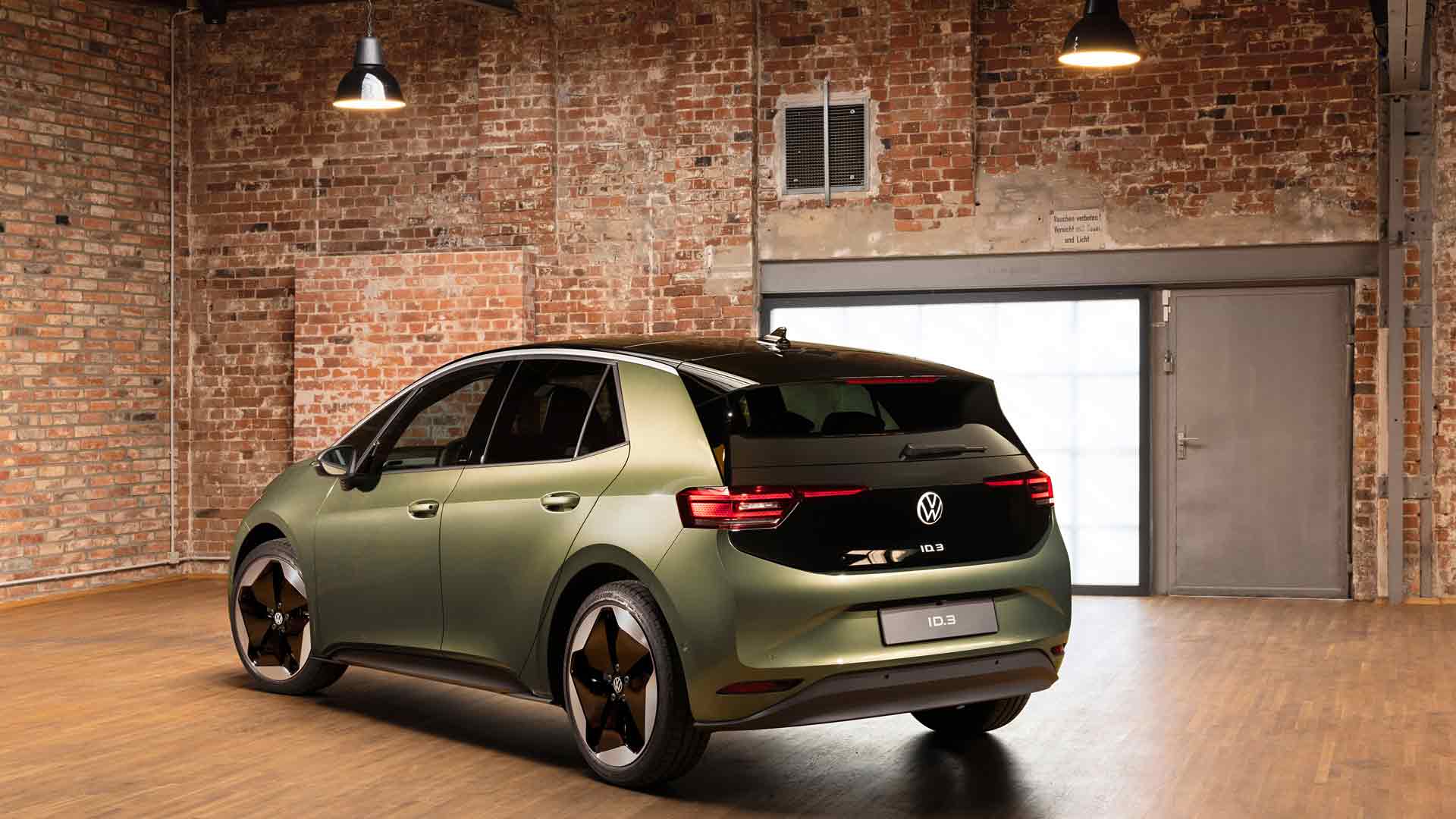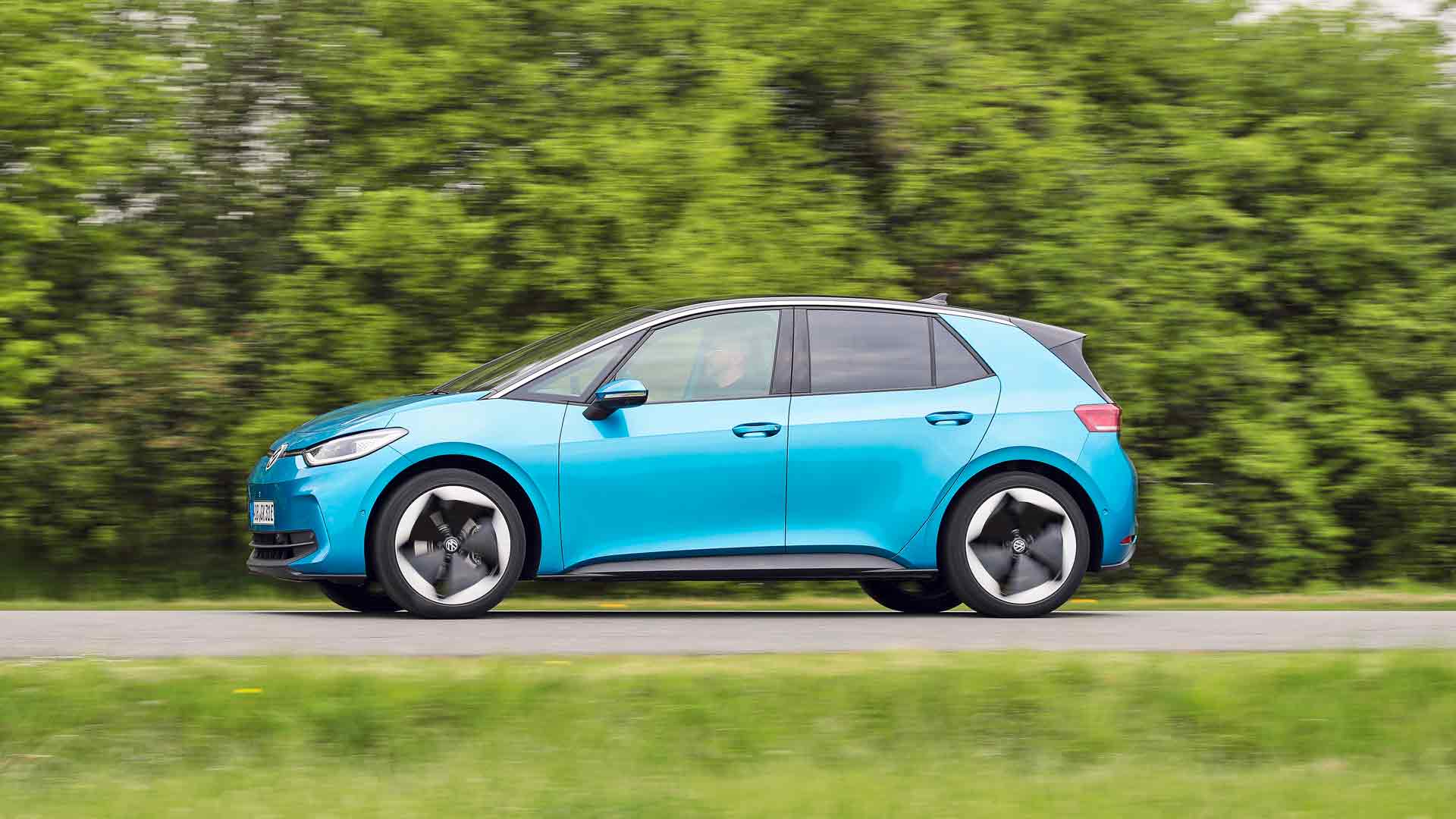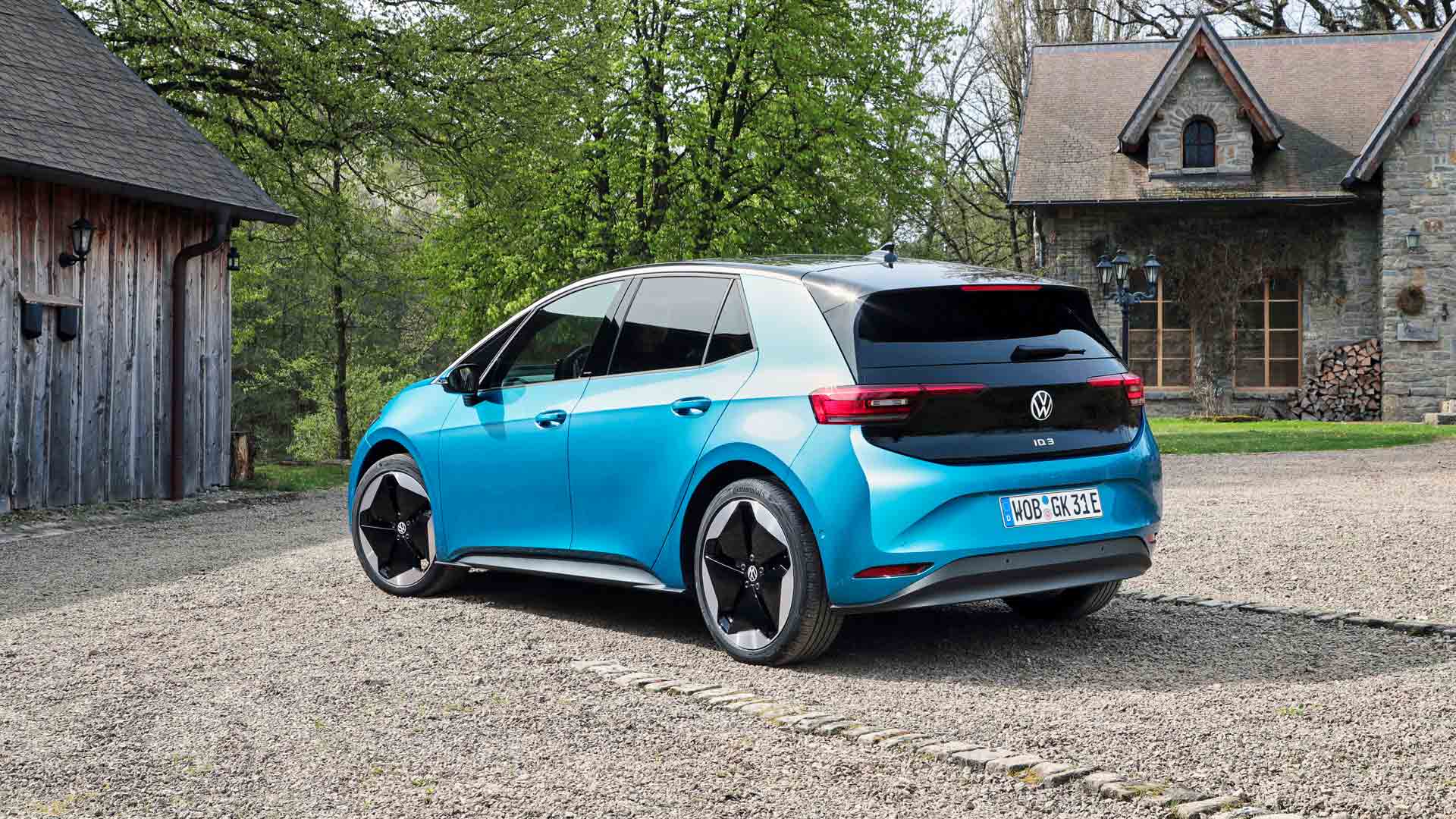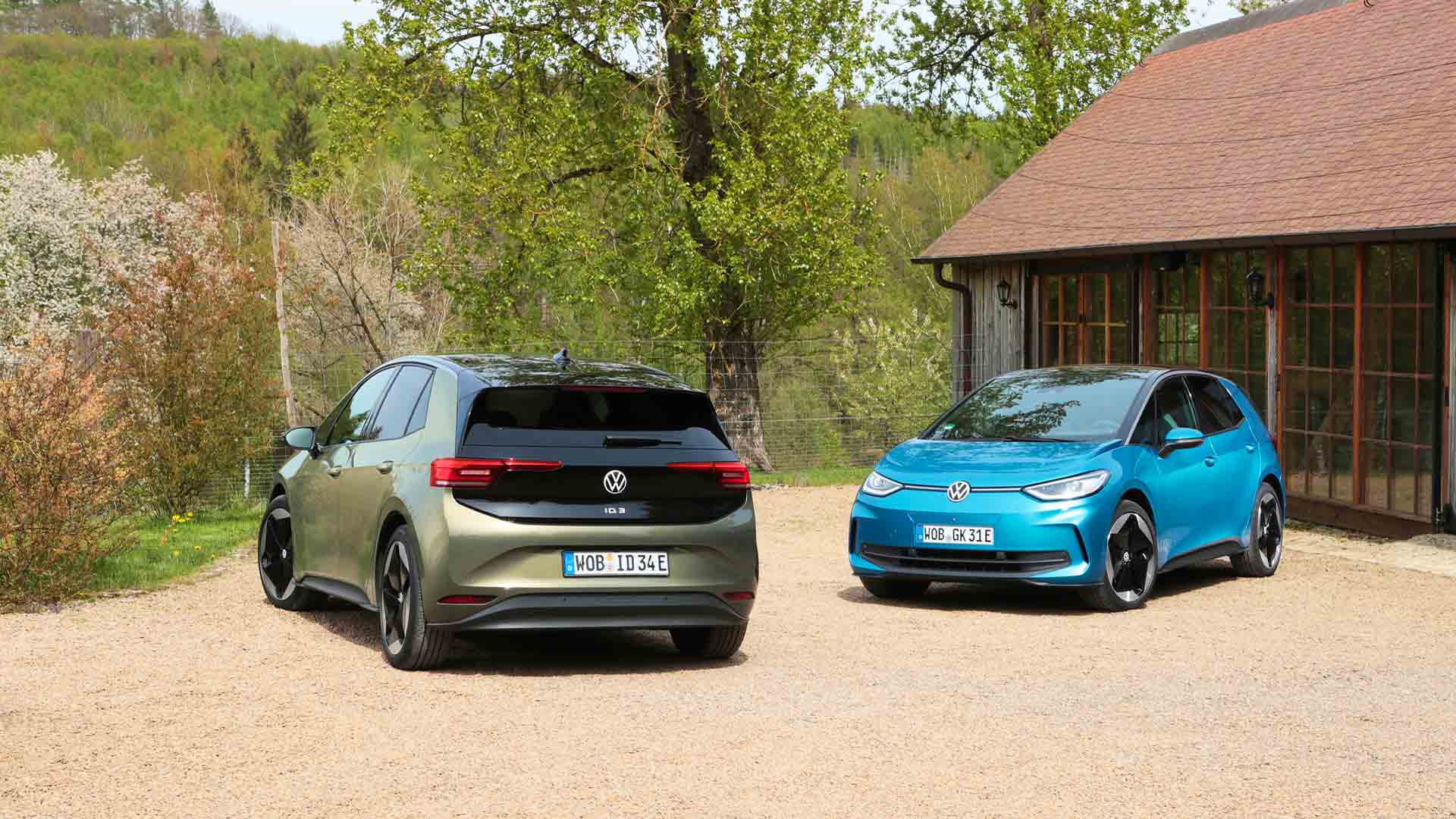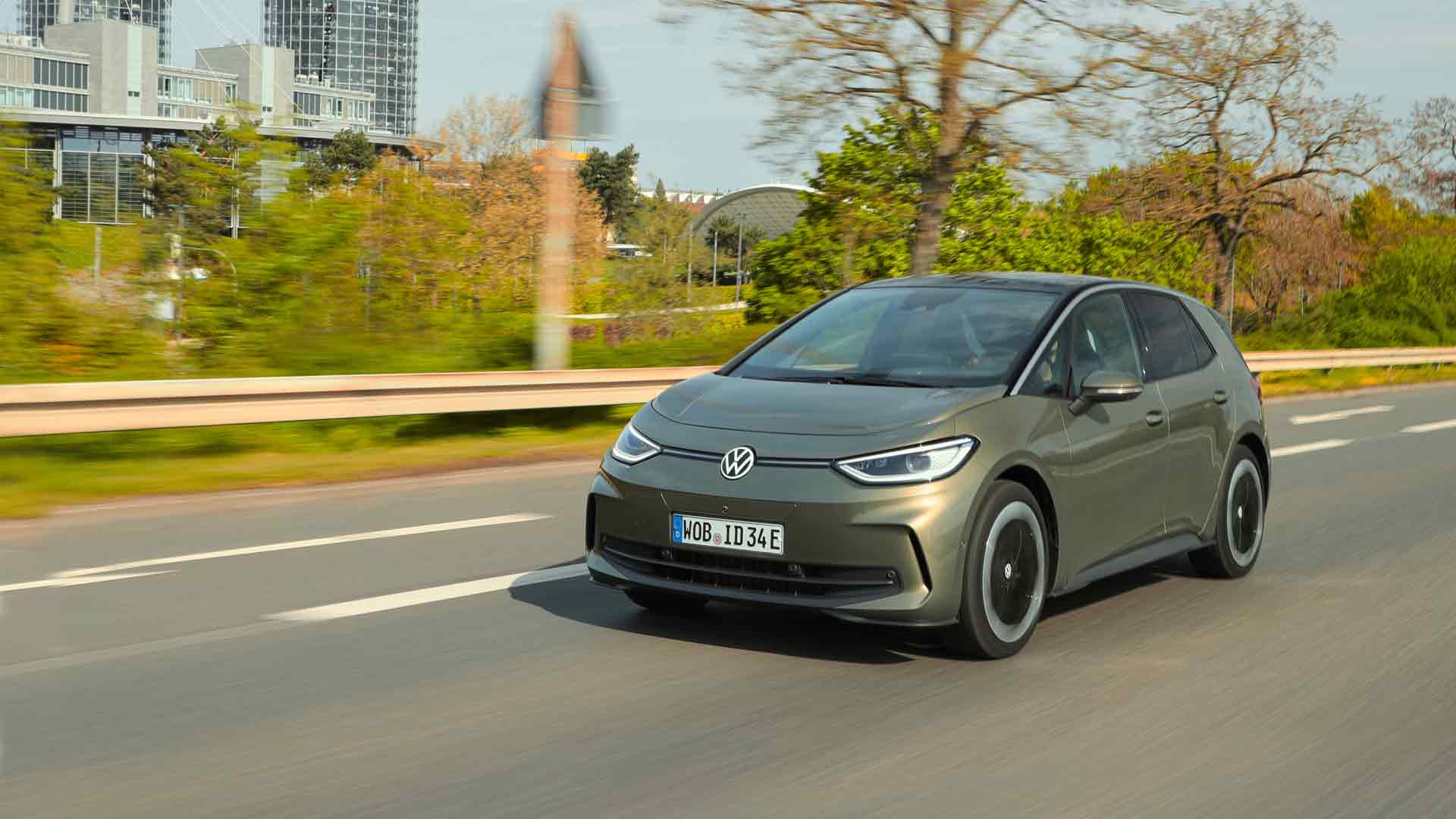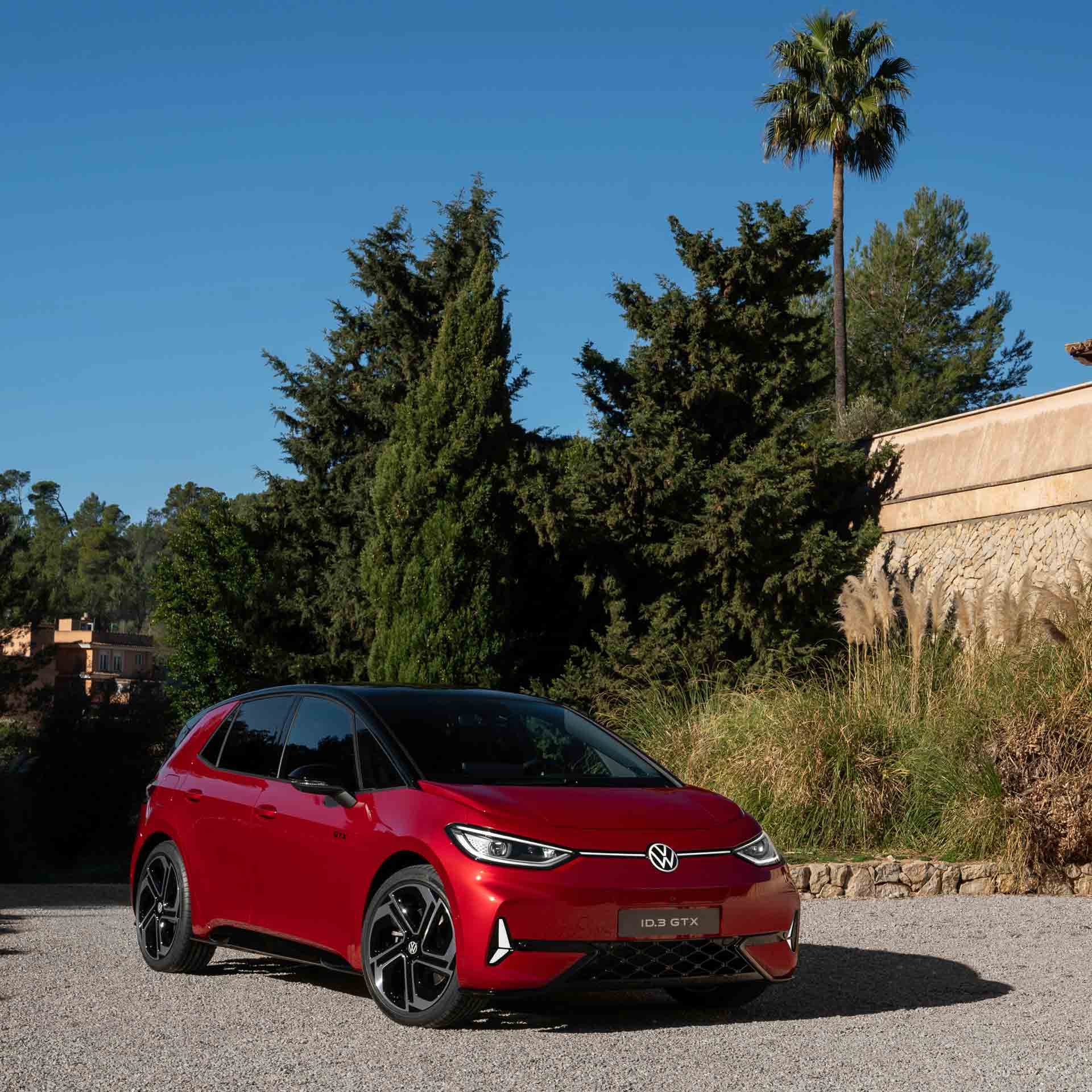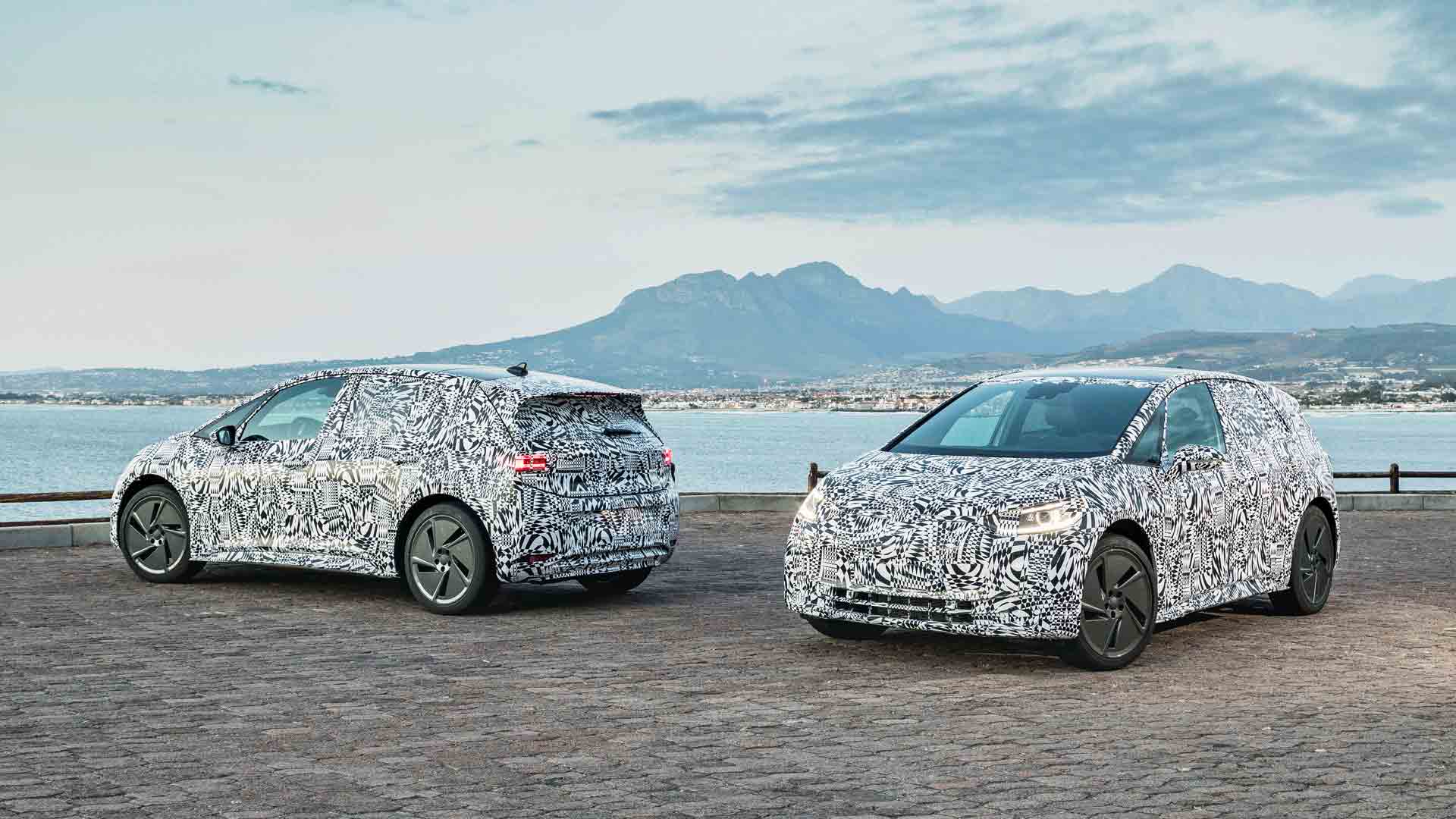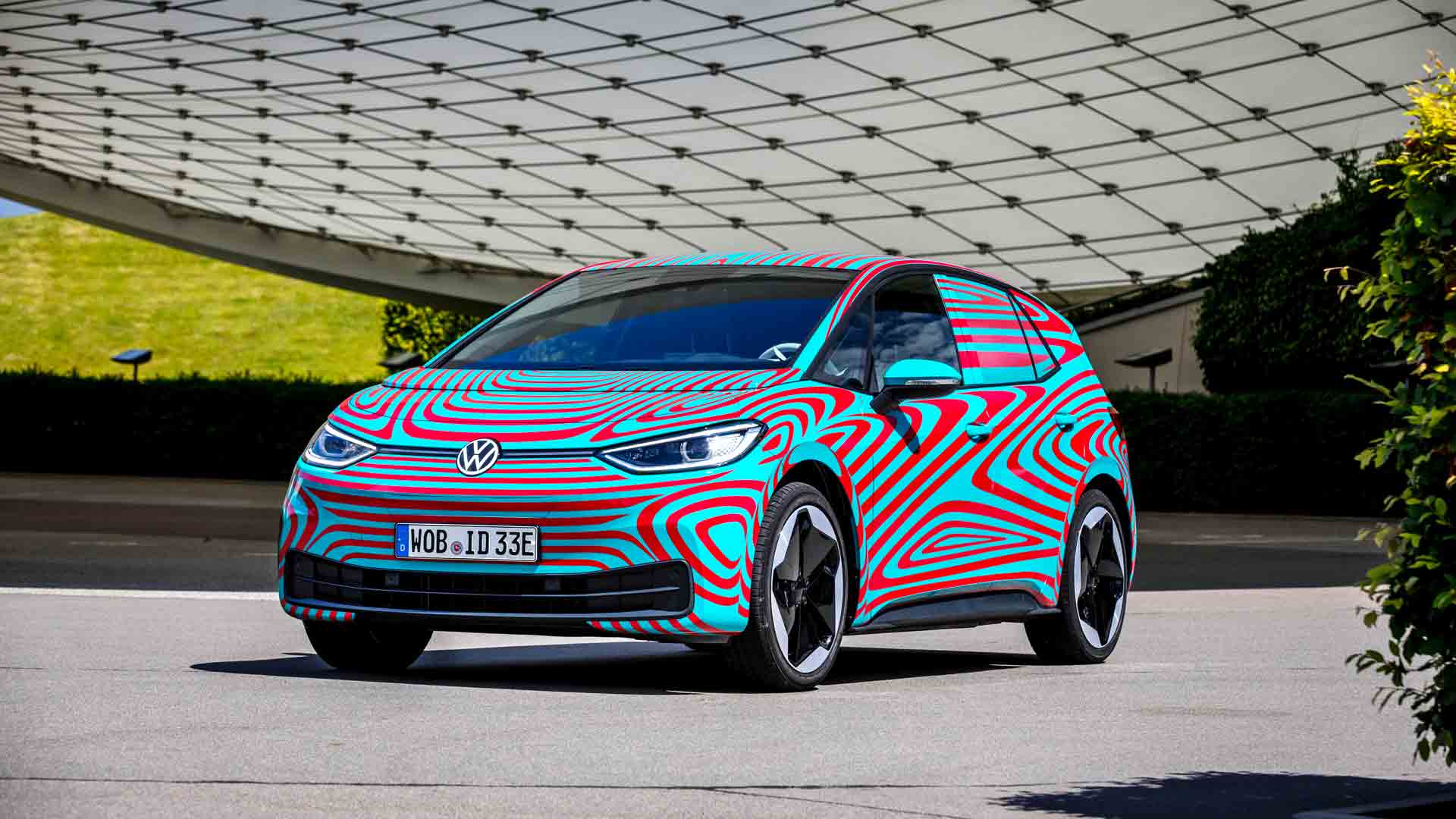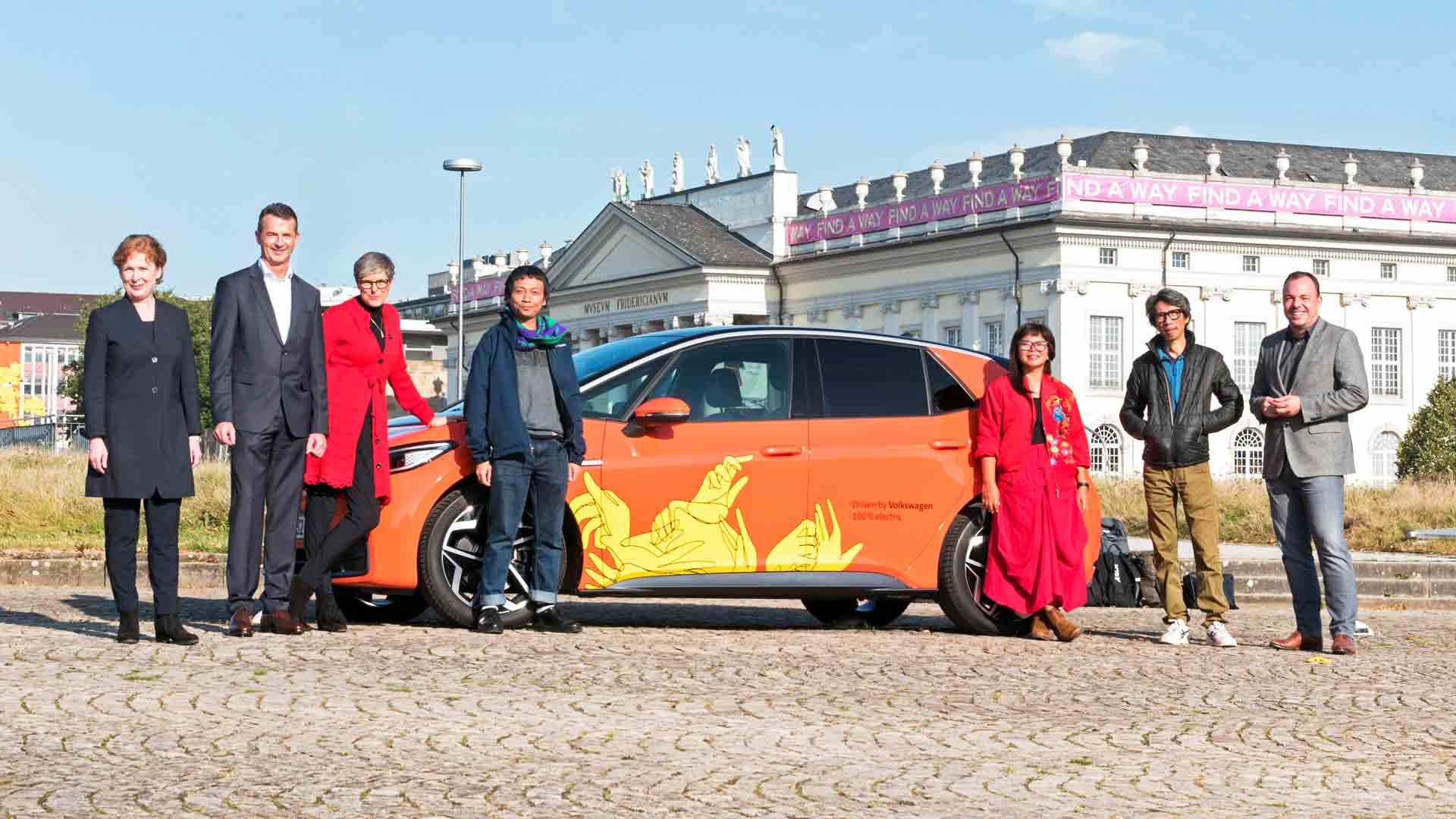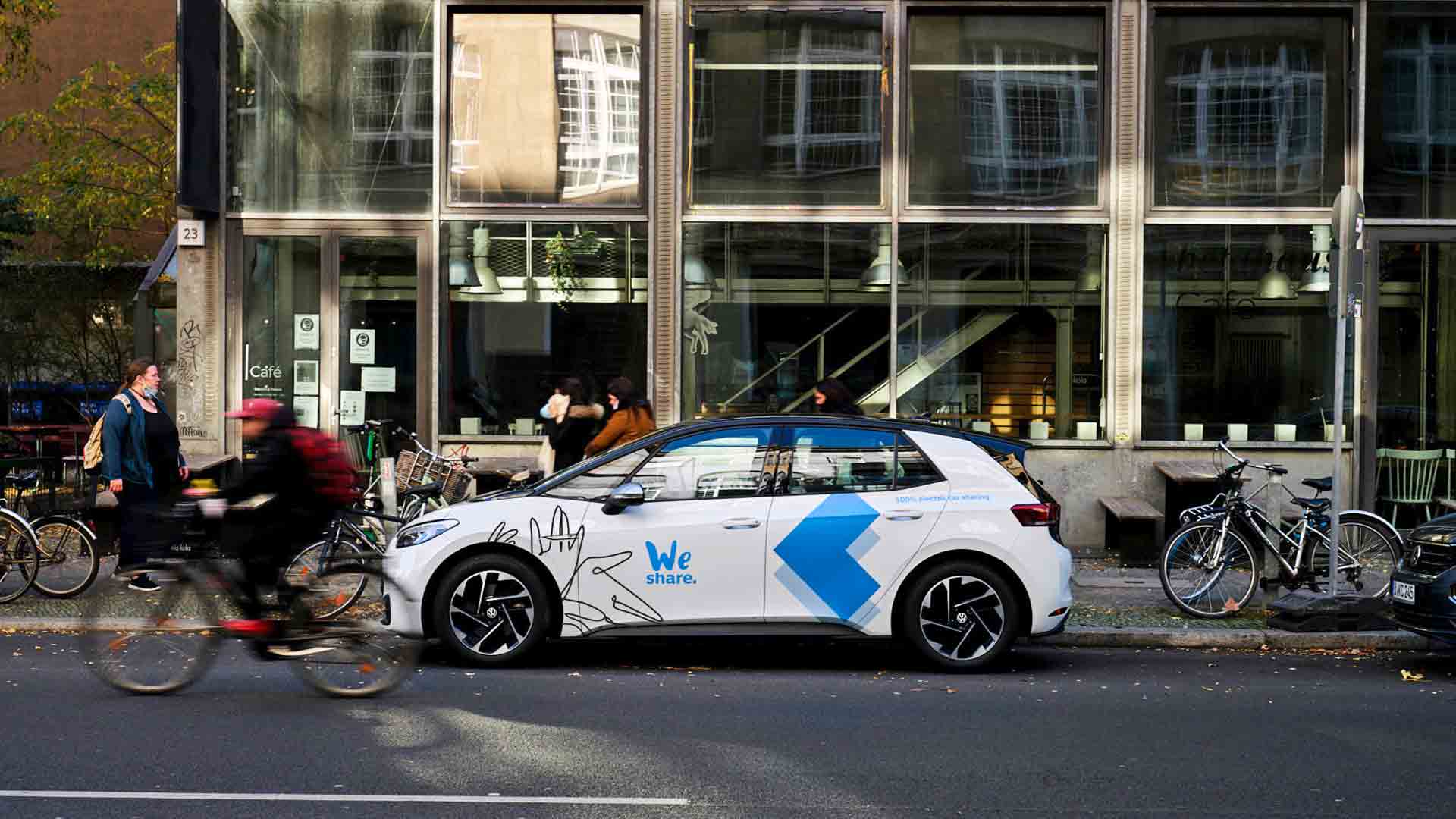The first true e-VW
Since 2019, VW has been calling its compact class electric car the ID 3, a kind of electric Golf. But not a real electric Golf, and so minus the cult factor. And only its badge reveals that it is a Volkswagen. Nevertheless, it deserves a place in automotive history as the first VW to be designed as an electric car without a combustion engine. Right now, Herpa is enriching its range of current passenger cars with the Volkswagen ID 3.
“ID” is a name that’s been used before - by Citroën, a long time ago. Today's marketing managers at VW, 30-odd years old, with a wide range of professional experience, a year abroad, and proud of their master's degree, may not be aware of the fact. ID was the plain sister of the DS, launched together with the DS, but renamed D Spécial and D Super in 1969. So, there was no Citroën ID until 1975. ID and DS are phonetic graphemes, in French of course: DS is pronounced like “Déesse”, which means “goddess”, and ID is self-evident because the French “Idée” differs from the German “Idee” only by an accent, and is even pronounced the same here and there. Now, the DS indeed was a divine automobile, and the simpler ID also provided some ideas of its own, so the designations were totally appropriate.
At VW, everything is much more mundane, much more technocratic. They don't think about phonetics, at most about which “engine noise” exactly a computer should simulate in an electric car. ID at Volkswagen is just an abbreviation. It stands for “Intelligentes Design”, which fortunately has the same letters when translated into English. But Volkswagen goes further and wants people in Germany to pronounce “ID 3” in English, i.e. “Ai-Dieh Three”. Opel wanted the same for the Adam and called it Äd'm – even though it is said to be named after the German company founder Adam Opel. He certainly didn't pronounce his own first name “Äd'm”. The VW ID 3 is rather German (like the faded Opel Äd'm). It originates from the Zwickau and Dresden plants. Anyway, Herpa is not making a Volkswagen Ih-Deh Drei, but a Volkswagen Ai-Dieh Three. Really, it's nice to be clear about this. We can now address the little car in a contemporary way, perhaps so that it will understand us. And “Ih-Deh Drei” is now only the absolute hillbilly version.
Also called Idée, but it has nothing to do with the VW electric car - a Citroën ID19 from 1964, with its sole Dutch owner since 1982, photo: Dennis Elzinga, 2013
The 3 denotes class affiliation
The VW electric vehicles are all called ID, followed by a number that indicates the class to which they belong. There are five basic models with individual variations, the ID 3, 4, 5, and 7 models, and the ID Buzz bus. The ID 3 is the smallest electric VW and also the first Volkswagen developed purely as an electric car, premiered at IAA 2019, and it is exactly the same size as the Golf.
A VW used to have an engine at the front and the drive at the front. The ID 3 has batteries at the bottom and its drive at the rear. Yes, the electric VW is a rear-wheel drive!
The designer of all ID models is Klaus Zyciora, including the ID 6, a mid-size SUV only available in China, and the ID Buggy concept car. Since the end of 2023, he is no longer a VW designer, but works in the same position for the Chinese car manufacturer Changan, which is still unknown in Europe, but intends to launch the brand here this year.
[1] Responsible for the look of the ID3 is Klaus Bischoff, VW's chief designer, here in the ID. Roomzz, a studio at Auto Shanghai 2019...
[2] ...and this is the person who wields the pencil: Klaus Zyciora, with the ID Buzz in the Gläserne Manufaktur (transparent factory) in Dresden in March 2022.
Volkswagen got off to a good start with the ID 3, when the German government (and governments abroad) were heavily subsidizing battery-powered cars. After they stopped doing this, however, sales figures stagnated and Volkswagen responded with significant price cuts in 2022. It all started so hopefully, and even the Chancellor of the time gave a speech. Simultaneously, VW launched an offensive even before the official presentation, where customers could reserve one of 30,000 Volkswagen ID 3s in particularly fine trim by putting down a deposit of 1,000 euros. Even before its IAA debut, these 30,000 special models of the ID 3 First were actually sold-out.
Wherever there are big announcements to be made, the grandees of politics turn up without fail. Angela Merkel was still Chancellor at the time, and she spoke wise and optimistic words on the occasion of the ID 3 production launch.
The prices of the ID 3 were originally quite high: 40,000 euros for the ID 3 Pro, 46,000 euros for the ID 3 Plus and a hefty 50,000 euros for the ID 3 Max (and then there was the ID 3 Pure as a basic model, more for fleet buyers). But there were glitches right from the start: the cars were delivered with incomplete software and VW has to compensate customers who had to go to the workshop later for their update. And then the air conditioning heat pump didn't work properly (those heat pumps!). VW compensates affected customers in this case too. Then came the semiconductor crisis of 2021, which led to production stoppages. And then, from the end of 2023, there was to be no more subsidy bonuses from the German government. Here too, VW, like all other manufacturers, had to react and more or less cover the subsidy amount - which ultimately meant that VW offered the ID 3 more cheaply.
Press conference at the end of 2019 to mark the start of production.
Nevertheless, VW would produce 366,695 vehicles by 2023, of which 86,742 would be registered in Germany. The best year was 2021, with declines in registrations in the following two years. VW countered this with a modification at the end of 2023, mainly upgrading the interior materials (71 percent recycled), a bit of a facelift for the front, and improved aerodynamics. Indeed, VW reacted in such a way that production at the main plant in Wolfsburg was off the table. In March 2024, the normal ID 3 was joined by its sports version, the ID 3 GTX.
Production stations in Zwickau. A battery car is created.
A person who buys an ID 3 wants VW quality, not Tesla quality
Anyone who drives the ID 3 says it drives well. It drives the way an electric car drives. Crisp and agile, brisk, but in good old Golf GTI style, with a top speed of 160 km/h. The electronics intervene frequently in normal driving mode, i.e. when the driver “is flooring it” (deceleration before junctions, downhill gradients, speed limits), and when they take their foot off the pedal, the ID 3 just floats along. In other words, purely synthetic driving. Because the batteries are positioned in the underbody (the passengers virtually sit on them), you sit higher than in the Golf, so you can get in and out of the car comfortably (the reason why senior citizens love vans so much), and depending on how you drive, you can cover around 450 km. That all sounds good and proper. But one figure alone puts the “success” of the ID 3 into perspective: customers want Golfs, not ID 3s. 22,270 new ID 3s were registered in Germany in 2023, compared to 81,117 brand-new Golfs (and there were still state subsidies for e-cars at the time!).
It all started with the special First model. It could only be ordered by customers who had never seen the car live. This was because orders were placed before the start of production.
Why was that - apart from the general skepticism about electric cars? The ID 3 didn't look like a Volkswagen, it didn't quote any VW theme, it didn't tie in with anything that came from Wolfsburg. Perhaps Zyciora had created a random design. VW used cheap-feeling plastic, especially in the interior, and took its cue from Tesla. But the buyers weren’t sold. People who wanted a VW didn't want a Tesla (and vice versa) and expected VW quality, not Tesla quality.
This is how we imagine the idealized filling station of the future: 60s architecture with the electric infrastructure of the future, instead of the usual petrol pumps.
Then there was the price. Others calculated more customer-friendly prices, had more power or more extras. VW charged extra for the heat pump, which others had on board as standard. And on top of that, the original 150 hp version was no longer available; the base ID 3 came with 204 hp. Not everyone needed that much in the compact class segment. What's more, the European competition now had electric Polo segmen cars on the market (Citroën e-C3, Renault 5). While the ID 3 remained the entry-level model at VW, the ID 2 wouldn't appear until 2025 at the earliest, and it hasn't even been decided yet whether an ID 1 is to come out in the Up segment. In the fall of 2023, according to several media reports, VW felt compelled to issue a denial: The ID 3 would not be discontinued.
As big as a Golf, it’s from VW, but doesn't look Golf-ish at all. The ID 3 was aimed at the Golf clientele, but failed to create a familiar connection to the original. That was probably its biggest shortcoming.
Golf and ID 3 likely to merge n future
Herpa will certainly be up to date with its ID 3 novelty for a few more years to come. A successor to this first genuine VW electric car is unlikely to come onto the market before 2028. And then the Golf development department will probably join forces with the electricians in Wolfsburg. A kind of comprehensive electric Golf IX will then surely come along combining the advantages of both worlds (something that the e-Golf, which was discontinued in 2020 and is based on the combustion-powered Golf, was unable to achieve). Herpa has therefore backed the right horse, and Herpa, too, has a long tradition in the history of the VW compact class. With the exception of the original Golf, the Golf V, VI and the current Golf VIII, Herpa has most of the iterations of the Golf in its range.
The Golf GTI among the electric VWs: the ID 3 GTX. Not 145, not 150, not 170 and not 204 hp (like the normal ID 3) but as much as 286 hp, and even 326 hp in the performance version.
The ID 3 offers Herpa the potential for many (color) variants. For the 2024 model year alone, the ID 3 configurator lists seven exterior paints: as a solid moonstone gray paint with a black roof, and solid grenadilla black metallic besides five metallic paints with a black roof. There have been and continue to be special models, starting with the ID 3 First. A number of tuners meanwhile offer unusual liveries. The Hamburg police, for example, have three ID 3s in use as patrol cars plus one for press and public relations work. VW itself offers various wheels. A number of companies use an ID 3 as a company car with corresponding door lettering or even company-specific paintwork. These are companies that actually have (or think they have) a role-model function and therefore promote electromobility in their company, but there are also those getting on board green-washing themselves with an ID 3.
The typical camouflage cladding of the prototypes, which are already permitted on the road.
In any case, the ID 3 is most welcome in the Herpa program. Not only because it is a VW - and there are many VW collectors. Not just because it complements the many Herpa Golfs. Not just because it is always nice when modern cars appear in 1:87. Not only because electric vehicles generally lead a shadowy existence in the model car sector. But just because it’s Herpa making them.
[1] Herpa has many opportunities to present the ID 3 in far more than the official color palette, although this go-fast stripe henchman will certainly pose a challenge to Herpa's printing cababilities.
[2] Volkswagen is going all out for culture. Indeed, VW cooperated with the organizers of Documenta Fifteen in 2022, as the 15th edition is aptly named. When VW made its ID 3 available, the scene was looking forward to innocent, contemporary art. Nobody suspected at the time that the festival would become embroiled in scandal. The ID 3 was certainly not to blame.
[3] Another Documenta Fifteen: The ID 3 as a car-sharing vehicle for visitors - lots of ideas for Herpa color variants.
Text: Alexander Franc Storz
Photos ID 3: Volkswagen
Facts and figures
Volkswagen ID 3
Production: since November 2019
Production: in Zwickau, and since January 2021 in Dresden
Designer: Klaus Zyciora
Sister model: the Cupra Born, also built in Saxony, as of September 2021
Production figures: 363,695 units by the end of 2023, plus 86,702 Cupra Born. So a total of 450,397 units

